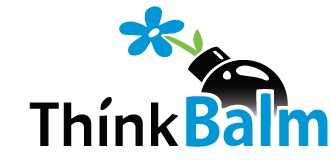- in Blog Articles by Sam Driver
A realism model for Immersive Internet apps: Part II
In an earlier ThinkBalm article, A realism model for Immersive Internet apps: Part I, we went into a bit of detail about the two axes of Immersive Internet realism: visual and data. Visual realism is accurate representation without idealization. Data realism supplies a virtual environment with current, accurate information. In this companion article we build upon these ideas and use analogies from the book, movie, and video game worlds to describe the four main categories of Immersive Internet applications:
- Non-fiction video game-like. If you want to collaboratively design and prototype a new engine part, you need high levels of data realism (e.g., measurements, specs for related assemblies). But you might not necessarily need as much visual realism (color, the way light glimmers off the surface, etc.). In another example, many aspects of molecular biology simply cannot be modeled with a high degree of visual realism because the subjects are far, far too small. Here, visual realism isn’t even relevant. For examples of non-fiction video game-like Immersive Internet implementations check out Daden Ltd.’s 3D airplane tracker (link to video is below), the Fold-It serious game (see the ThinkBalm article, Know when to fold ‘em), IBM’s 3D data center operations (link to video is below), and Implenia Global Solutions’ EOLUS One virtual facilities operations center (for a great write-up see the Ugotrade blog post, “EOLUS Makes Leap To 3D Internet On Second Life“).
- Fiction video game-like. At first blush the words “fiction video game-like” may appear to have no bearing at all on real work. But don’t let it turn you off too quickly. Non-realistic looking virtual environments that don’t contain much accurate or current data are still perfectly relevant for some types of business applications – especially meetings, conferences and events, and conceptual training or business activity rehearsal. For examples check out Cisco Partner Space, Michelin Group’s enterprise architecture training for IT professionals (sorry, the only publicly-available write-ups we know of are in French), and the Microsoft Heroes Happen Here product launch (see the ThinkBalm article, At Microsoft, cost of virtual events about 1/3 the cost of traditional events).
- Fiction interactive movie-like. Some immersive learning simulations and business activity rehearsal activities require that the experience look and feel as if it could be real, but doesn’t require real data underpinnings. Check out these examples: Hilton Garden Inn Hotels Ultimate Team Play, the I-95 Corridor Commission and Univ. of Maryland virtual highway accident training application, Stanford Medical Hospital student training, and the US Department of Justice National Institute of Justice Incident Commander training tool for homeland security.
- Non-fiction interactive movie-like. If you are collaboratively designing a new pair of high-end in-line skates, you might need both data realism and visual realism. Or how about a just-in-time manufacturing process that requires the participation of a large, complex supply chain? Or the remote forklift operations scenario we briefly described in the ThinkBalm article, Heavy equipment manufacturer explores Immersive Internet for product prototyping. But attaining high levels of both visual and data realism is hard to do and we are not aware of production implementations made public just yet. Technologies that will enable non-fiction interactive movie-like immersive environments include mirror worlds like Google Earth and Microsoft Virtual Earth, computer-aided design (CAD) models, and simulators like Microsoft ESP. A particularly interesting example we saw recently is VoxVue/RE, a 3D data visualization solution for the commercial real estate industry.
It’s important to keep in mind that no one category is inherently superior to the others. Each has appropriate use cases. And use case plays an enormous role in making a sound technology selection because no virtual world platform on the market can be used to deliver all four categories of Immersive Internet applications.
